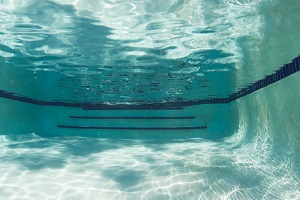 Although swimming pools can be very appealing features in many homes, they also have several drawbacks. The high costs of maintenance, along with the risks and liability of pool ownership, drive some homeowners to undergo the swimming pool removal process.
Although swimming pools can be very appealing features in many homes, they also have several drawbacks. The high costs of maintenance, along with the risks and liability of pool ownership, drive some homeowners to undergo the swimming pool removal process.
For others, the idea of reclaiming yard space to be used for another purpose is an attractive one, particularly if the existing swimming pool occupies a large portion of the yard.
Pool removal is becoming very common, and there are two main approaches that are used. The first is a partial removal. This is also known as a fill-in because it involves demolishing the top few feet of the pool and throwing the debris into the pool. Holes are punched in the bottom of the pool to allow for drainage, and then the area is filled with dirt that is compacted and smoothed.
The Process Of Removing An Inground Pool
In a full removal, the entire contents of the pool are broken down and hauled away, and the area is then backfilled and compacted. Many people choose this route because it returns the yard in a condition equivalent to if a swimming pool had never existed there.
A partial removal may be more affordable and quicker, but its potential impact on the home’s resale value and ability motivates many homeowners to opt for a full removal. Outlined below is a look at what is involved in the inground pool removal process.
Checking The Building Code
Before embarking on a pool removal project, it is important to check with your local building department to find out if a permit is needed for pool demolition. Many cities and counties have regulations in place governing this process, and there may be permit fees to pay as well.
Some of these fees include encroachment and recycling deposits that are returned once the project is finished. If you are using a contractor for your full removal, they will likely handle this step and include the costs in your quote, but it is important to confirm this.
It is also useful to find out whether it is necessary to have an inspector evaluate the site as the work progresses. There may also be specific size requirements for the holes that are drilled into the bottom of the pool, among other specifications that must be followed.
Draining The Swimming Pool
Draining a swimming pool can be more involved than it sounds. The water in swimming pools typically contains chlorine, sediments, copper and other contaminants that cannot go into waterways.
 As a result, some local areas have procedures for draining swimming pools that may involve neutralizing chlorine, removing copper and discharging water into a storm drain or planted area, while other areas prohibit pumping pool water into a storm drain.
As a result, some local areas have procedures for draining swimming pools that may involve neutralizing chlorine, removing copper and discharging water into a storm drain or planted area, while other areas prohibit pumping pool water into a storm drain.
During the draining process, it is essential to take precautions to prevent the pool from floating. When water builds up under the pool, its pressure beneath the pool shell could exceed the pressure of the pool’s weight, causing the full shell to float. This is not a significant concern with a full removal but may prove problematic with a fill-in.
Determining Where Utility Cables Are
Prior to beginning a pool demolition, it is important to find out where service cables, wires and pipes are buried by utility companies in the yard surrounding the pool to avoid causing damage. Contractors generally take care of this step as well. If the pool has a gas heater, it must be disconnected before the project gets underway.
Demolishing The Swimming Pool
The demolition itself is one of the most complicated aspects of the swimming pool removal process, whether you are getting a full removal or a fill-in. This requires skilled workers and special tools and should not be undertaken as a DIY project. It may be necessary to remove some decking or fences from the yard to allow the heavy machinery needed for the work to gain access to the area.
In a pool fill-in, multiple holes are drilled at the bottom of the pool to stop water from collecting beneath it and causing trouble in the future.
The side walls are not completely removed; just the top part is broken down. If it is a full removal, the entire structure is completely broken down and the materials are hauled away.
Tools such as pneumatic hammers and hydraulic breakers may be used to break the walls and floor of the swimming pool, along with any decking that must be removed. The impact force created when using these tools can create dangerous concrete projectiles that can injure people nearby, so it is important for all safety procedures to be followed throughout the swimming pool demolition.
Backfilling And Compacting
Once the swimming pool has been demolished, the backfilling and compaction process begins. This is an important step because it impacts the integrity of the area. If you are getting a full pool removal and intend to build a structure over the area in the future, you may be required to use engineered backfill.
However, if the area will be used for a garden, planting grass or other simple landscaping projects, there are fewer requirements.
With backfilling, the empty space where the pool was located is filled with sand, dirt or gravel and then compacted. This is what allows the excavated area where the pool stood to return to a normal yard.
Reach Out To The Inground Swimming Pool Removal Professionals
 Pool removal services can transform your yard into a beautiful and usable space that is free from the risks, expenses and dangers associated with owning a swimming pool.
Pool removal services can transform your yard into a beautiful and usable space that is free from the risks, expenses and dangers associated with owning a swimming pool.
If you are interested in avoiding the drawbacks of having a swimming pool and are ready to reclaim your yard for another purpose, get in touch with the experienced swimming pool removal professionals at Dirt Connections.
We offer partial and full swimming pool removals across Northern Virginia at competitive prices and can safely remove pools of all sizes and conditions.
Summary

Dirt Connections was started with one goal in mind: providing quality residential and commercial construction services to clients on time and on budget. Reach out for more information on how we can support your next project.
For your convenience our estimates are free and by appointment. Call 703-940-9949 for a free estimate today!









































